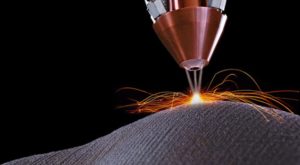 Even if you’re not directly related to the industry, you must have heard about 3D printing as it rapidly became the new trend. 3D printing, also known as additive manufacturing (AM), refers to a process of creation of a three-dimensional object with layers of material formed under computer control. Material layers are formed one by one to create the final object in the end.
Even if you’re not directly related to the industry, you must have heard about 3D printing as it rapidly became the new trend. 3D printing, also known as additive manufacturing (AM), refers to a process of creation of a three-dimensional object with layers of material formed under computer control. Material layers are formed one by one to create the final object in the end.
History of 3D Printing
The history of 3D printing goes back to the 1980s when the Japanese edition of the IEICE Transactions on Electronics published an article on 3D printing process in 1981. The article featured two methods for creating three-dimensional objects using controlled ultraviolet light exposure on a photo-hardening polymer.
For the next 3 years, nothing much happened until the next milestone in 1984 when three French inventors Alain Le Méhauté, Olivier de Witte, and Jean Claude André filed their patent for the stereolithography (SLA) process. In the years to come, more international scientists and inventors filed their patents for SLA processes.
By 2005, additive technology patents issued in the previous years were starting to expire. That same year, the RepRap project was launched by Dr. Adrian Bowyer. The project aimed to create a low-cost 3D printer capable of replicating itself. This event triggered the appearance of many low-cost 3D printing companies.
Additive Manufacturing Market
Now, let’s turn away from the history of 3D printing and face the facts about additive manufacturing market. The value of the market in 2005 was over $750 million, however in 2016 it reached over $5.1 billion, the average annual growth rate is 33.8% for the last three years.
Additive manufacturing field has experienced unstoppable growth and innovation over the past decade. However, the major driving force of the industry is related to the expired patents. Those technologies, which were previously available to the biggest global players, can now be implemented by small businesses.
In the 3D printing field, new markets, tools, and techniques are emerging on the daily basis. For instance, a great number of 3D printing metal patents will be expiring in the next couple of years. This will most probably lead to an increase in availability and a decrease in prices of metal AM products and parts.
3D Printing Metal
Additive technologies allow creating metal parts with such precision and efficiency that had never occurred before. Metal spare parts that were previously impossible to produce with machine tools due to different reasons, can now be created easily. Additive manufacturing has a big impact on waste reduction as it’s only using the needed raw materials.
The laser represents a real breakthrough that has enabled 3D printing for mass production. The technique of spray welding has been used before to build up worn motor shafts. During the process of spray welding, powdered metal dispenser integrated into a special oxygen-acetylene torch head is used to melt the powder as it is dispensed. When a torch was swapped for a laser, the construction tool became even more powerful.
Additive Manufacturing Metal in Automotive Industry
If we were to name one industry that benefits from 3D printing metal technology the most it would be automotive industry. Additive manufacturing has a significant impact on car design since it allows the designer to easier tries out different ideas before implementing them. Although it’s hard to imagine, nowadays some of the cars have been 3D printed entirely. 3D printing metal techniques are extremely beneficial for car restoration. Owners of classic cars usually stumble upon an issue that spare parts for their retro vehicles are no longer produced.
In this case, additive manufacturing comes forward allowing to 3D print the needed parts. The last but not least is car customization which is also simplified big time with 3D printing. Combining design and production and bringing it to the prosumer level is the major possibility provided by additive manufacturing.
Future of 3D Printing Metal
One of the ongoing projects is particularly relevant for the future of 3D Printing metal industry. This project represents a joint venture between the aerospace supplier Premium AEROTEC, EOS (industrial supplier for 3D printing metal) and Daimler (automotive manufacturer). The objective of the project is to reach a break-through with the automation of the entire industrial 3D printing process.
Around 70% of the total manufacturing cost is spread between the stages before and after actual production. The project will also strive to cut down those costs and qualify aluminum for use in industrial 3D printing.



